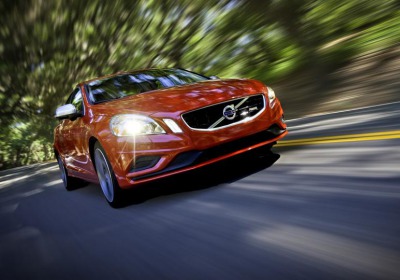Volvo testing new safety features
Tue, 10 Jul 2012
Volvo outlined three new technologies that it says will help make the Volvos of the future a good deal safer: autonomous driving, “Intersection Support” and animal detection.
Volvo says it's tailoring technologies to the way people drive, by which it means poorly. The company claims that “surveys from three different research institutes in the United States reveal that modern drivers spend 25 to 30 percent of their time behind the wheel doing other things, such as focusing on mobile communication.” Volvo's new technologies are said take this into account and “provide the driver with the right support at all times.”
By using a camera and radar, future Volvos will be able to follow the car in front while driving in slow traffic using an autonomous-driving function. The engine, brakes and steering wheel will react automatically to the car ahead of the Volvo. If the vehicle in front swerves, the Volvo will “veer in the same direction.”
“Driving in slow traffic is a monotonous and boring part of many drivers' everyday lives. Thanks to technology for autonomous driving, the car can help the driver comfortably and safely follow the vehicle in front,” explains Fredrik Lundholm, function developer at the Volvo's Safety Functions department.
Another new Volvo safety technology, Intersection Support, will apply the car's brakes automatically in certain kinds of emergencies. In the United States, more than 20 percent of all fatal accidents in 2007 took place at an intersection. The system “uses sensors to assess the entire traffic scenario,” according to Volvo.
The company uses the example of a line of cars turning left to illustrate how Intersection Support would work: “When the light turns green, one car after another turns left. Suddenly, an oncoming car drives through the red light and creates an immediate danger. In this situation, the turning car automatically brakes to avoid a collision. Intersection Support thus serves as a system that not only helps deal with the driver's own mistakes, but those of other road users, too.”
Animal detection is an extension of Volvo's pedestrian-detection system. It's trained to recognize shapes and “movement patterns” of wild animals. Volvo did not mention whether the system would be effective in preventing collisions with domestic animals.
Accidents with wild animals usually take place at cruising speeds, and Volvo says if it can reduce the speed of its cars from about 70 mph to 50 mph when a wild animal is detected, the risk of serious injury will be reduced.
To obtain the data for these systems, test cars are being driven thousands of miles in various environments. When fully operational, the systems will be tailored to local variations in driving style and traffic intensity. But these systems aren't all years away from being seen on new Volvos. As prices decrease on electronic sensors and components, Volvo says these systems will be fitted on all of its cars. But the person behind the wheel is still the lynchpin, according to Lundholm.
“It is always the driver who decides. He or she can take control at any time.”
By Jake Lingeman

